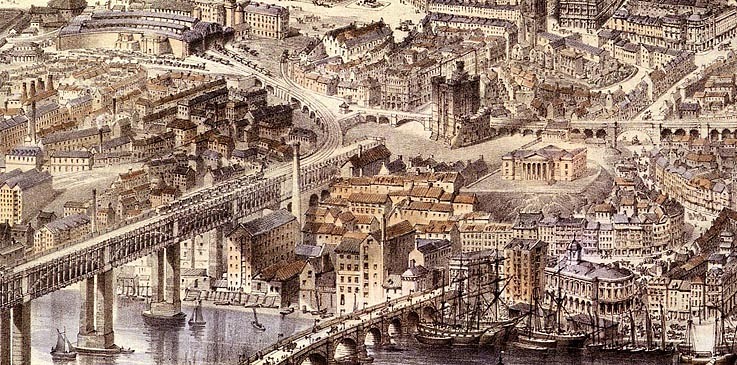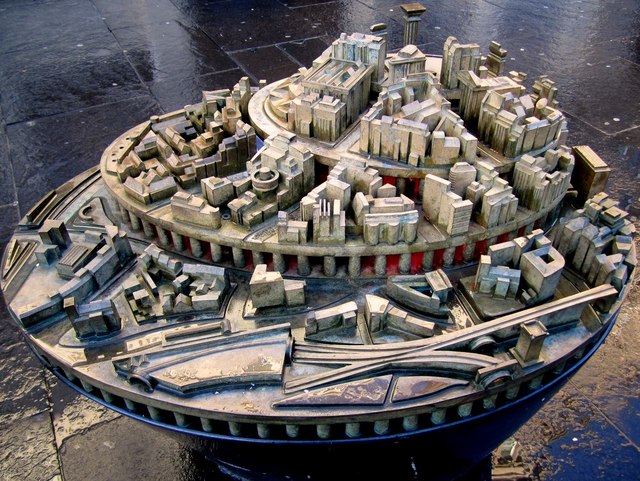How did John Storey achieve this lofty viewpoint? Did he have access to a balloon?
How did he manage to represent certain buildings and landmarks that were not yet built at the time of painting? These include the Tyne Brewery (1868), St Mary's Cathedral spire (1872) and the Tyne Tees Shipping Office (1875). How did the painter manage to predict the future? These buildings had been long planned, and John Storey presumably had access to the plans.
There are a large number of other illustrations and photographs from the period, and many old maps, which provide context and scale as the painting was done with some element of distortion and artistic license.
| Many of the buildings surrounding the Biscuit Factory have now gone, including the windmill shown at its front. Built in the late 1860s, the factory itself was run by Thomas Squire & Sons to make biscuits until just before the First World War and had several uses there after. |
| Just for fun, two modern panoramas of Newcastle. Above taken from the Sage, Gateshead not far from Storey's viewpoint but much lower. On the right, the sculptural map from Neville Street, across the road from Central Station. Click the photos for more detailed description of what you can see. |









 RSS Feed
RSS Feed
